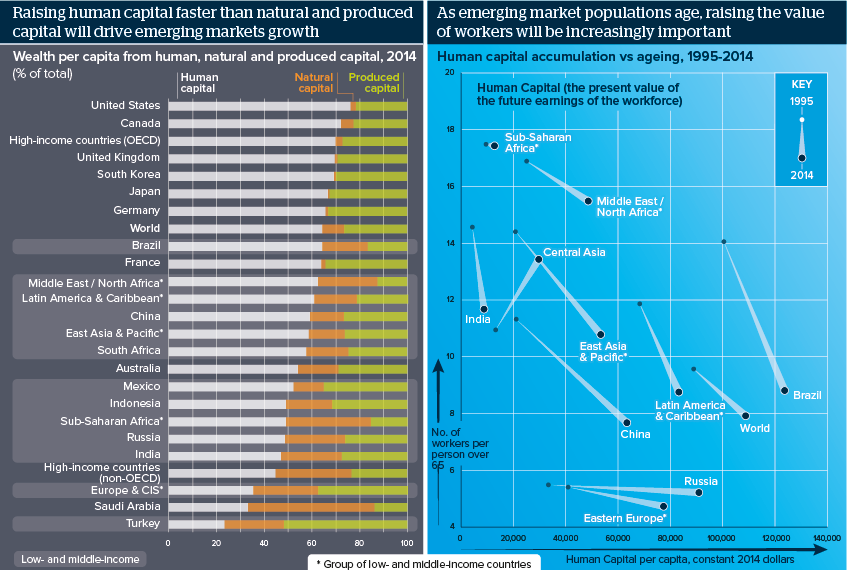Stimulating skills is key to emerging markets growth
Human capital will become as key to low-to-mid-income countries as it is for high-income ones
Source: World Bank Changing Wealth of Nations Report, 2018; UN Population Prospects 2017
Outlook
The World Bank Changing Wealth of Nations report includes human capital for the first time, building on 2006 and 2011 reports. Splitting 141 countries by wealth from human, produced and natural capital, low-to-mid-income countries depend more on natural capital than high income countries. Countries cannot increase their mining, agricultural, forestry and water resources but they can use and protect them better.
Technologies will allow high-income countries to reshore more stages of supply chains, reducing the value of produced capital in low-to-mid-income countries. Human capital provides most of high-income countries' wealth. Low-to-mid-income countries can catch up by prioritising education and training and physical, digital and social security infrastructure.
Impacts
- Human capital per capita fell in 1995-2014 in Japan, Italy and Mexico; and will in more if skills gains lag population and tech changes.
- Human capital accounts for less Chinese, Indian and Indonesian wealth than in 1995 -- reversing this is key to sustainable solid growth.
- Natural capital is over a third of Sub-Saharan African wealth; improving its use of this will be as crucial as enhancing human capital.
- Adding to the worries of its debts, produced capital provides over 50% of Turkey’s wealth, leaving it at risk from manufacturing reshoring.
See also
- Connectivity and training could increase EU equality - Jan 24, 2019
- Africa's future will hinge on closing skills gap - Dec 28, 2018
- Productivity increases could lift living standards - Sep 19, 2018
- Digitalisation will divide and drive economic progress - Jul 17, 2018
- Prospects for emerging economies to end-2018 - Jun 27, 2018
- More graphic analysis
